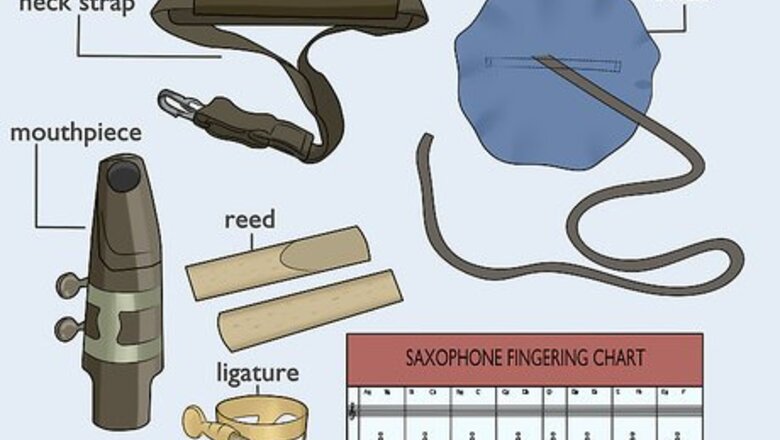
views
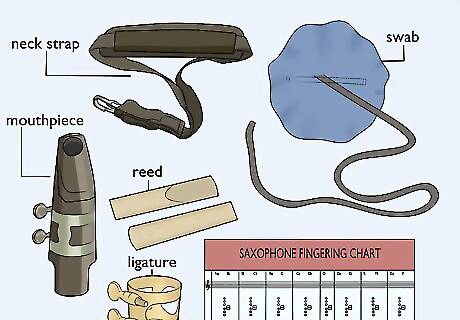
Obtain a decent saxophone and the accessories needed to play it. You may be able to borrow one from a school for a small fee, rent one from a local music store, or buy a used one. If you're using a particularly used or old instrument, you may want to have a music store technician look it over to make sure it's in good shape for playing. In addition, you'll need to borrow or purchase the following. A mouthpiece, if one doesn't already come with the instrument. Don't buy the cheapest one available, but don't splurge on a professional one yet, especially if you may not even stick with an instrument. You'll probably want one made of plastic or hard rubber. A ligature, if not included with the horn. A metal one is fine, or you can spend a little extra for a leather one, which is more durable and produces a better sound. Reeds: As a beginner, you'll want to start with strength 1.5 to 3 reeds and experiment to find a strength that produces the best effect with the least amount of effort. Good brands to start with are Rico and Vandoren. Neck strap: Tenor saxophones are heavy, and impossible to play without additional support. You can purchase a relatively cheap and comfy neck strap at almost any music store. Swab: Something as big as a tenor sax collects a lot of moisture when played. A swab is a piece of fabric (often silk) on a long string with a weight on the end that is pulled through the instrument to clean it. Fingering chart: A fingering chart shows how to play all the notes in the range of the instrument, and you'll want to have one when learning to play. Method book(s): While not required by any means, if you're learning on your own or would like some extra help, they are an excellent investment.
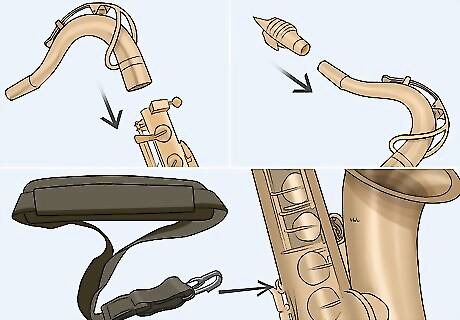
Assemble the saxophone. Attach the gooseneck (the short, curved metal piece - the curve is unique to the tenor sax) to the top of the body of the instrument and secure with the neck screw. Place the ligature on the mouthpiece and slide the reed under the ligature, securing it with the ligature screws. Attach your neck strap to the hook on the back of the instrument, put it around your neck, and stand up.
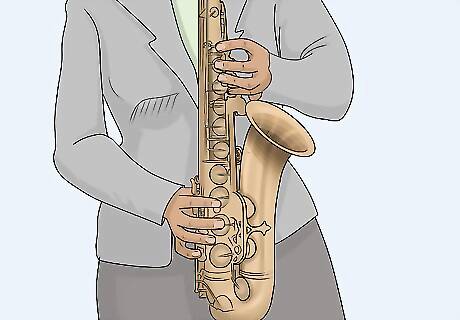
Make sure you're holding the instrument correctly. Your left hand should be on the top and your right hand should be on the bottom. Your right thumb goes under the curved thumb rest towards the bottom of the instrument. Your right index, middle, and ring fingers go on the mother of pearl keys that should be easy to find. Your pinky will move the other keys at the bottom of the sax. Your left thumb should go on the round piece at the top of the instrument. You will see five mother of pearl keys at the top. Your index finger goes on the second one down, and your middle and ring fingers go on the fourth and fifth, respectively. Do not put any fingers on the tiny key, for this is only used in certain notes.

Form your embouchure. Curl your lower lip over your bottom teeth slightly, and rest your top teeth on the top of the mouthpiece. You'll discover when you start playing that you may need to adjust this slightly.
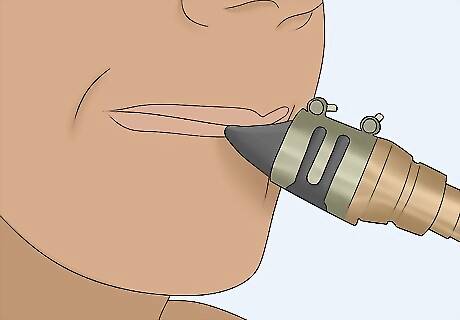
Without covering any holes or pressing any keys, blow into the instrument. If you've done this right, you'll hear a C# (concert B). If you're not getting a sound or you're making a squeaking noise, adjust your embouchure until the tone improves. Also, if this bothers your top teeth, you can easily purchase a mouth pad, and the buzzing should stop.
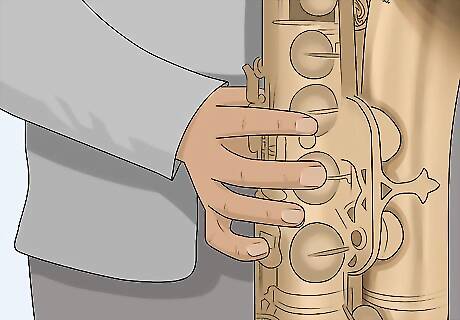
Move on to the next notes. Press the second mother of pearl key down with your left middle finger, leaving the others uncovered. This produces a C (concert Bb). Press the first mother of pearl key down with your left index finger. This produces a B (concert A). Press down the first and second mother of pearl keys. This produces an A (concert G). Continue covering more holes, going down the scale. Three covered is a G, four is an F, five is an E, and six is a D (concert pitch F, Eb, D, and C, in order). You may have a little trouble with the lower notes at first, but it'll improve with practice. Also, when playing the lower notes, drop your jaw, and your sound will improve significantly. Add the octave key (the metal key above your left thumb) to any of these fingerings to produce the same note, but an octave higher. With the help of a fingering chart, move on to altissimo (really high) and really low notes in the range, as well as flat and sharp notes. In time, you will be able to play every note your saxophone can reach.

Find some music to play. If you're learning for a school band, you'll definitely get something to learn from there. Otherwise, visit a music store to buy sheet music and/or method books to begin to play from.
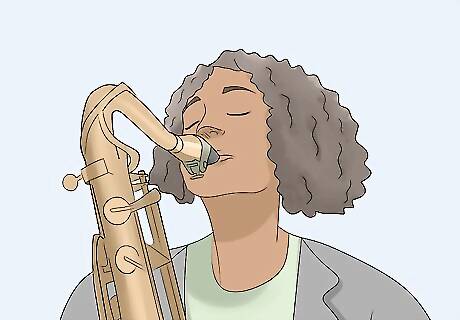
Keep practicing. With a lot of hard work and dedication, you'll get better and better at playing... who knows, you may be the next big name in jazz.

















Comments
0 comment